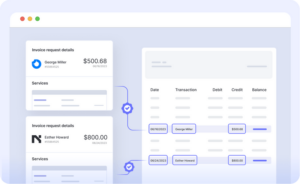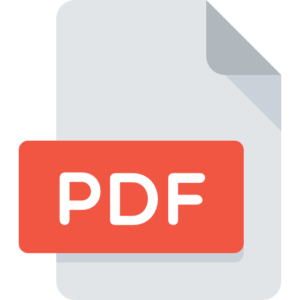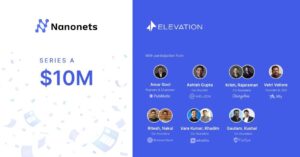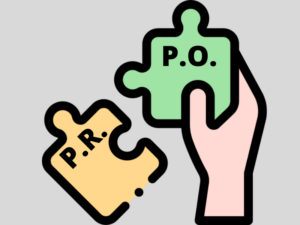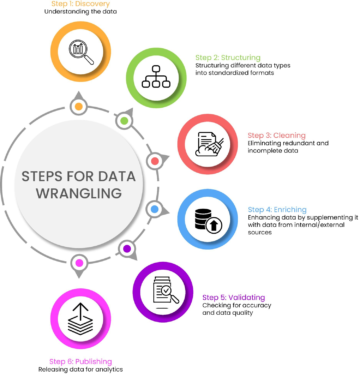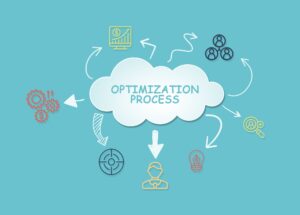Introduction to Lead Enrichment
In the dynamic world of marketing and sales, understanding your leads – the potential customers – is crucial. This is where lead enrichment plays a vital role. So, what exactly is lead enrichment?
Simply put, lead enrichment is the process of enhancing the basic information you have about your leads. It involves adding more details to your lead records, such as company size, industry, job title, and contact information. Think of it as filling in the blanks in a customer's profile to get a clearer, more complete picture.
But why is lead enrichment so important? Here are some key reasons, illustrated with examples:
- Better Understanding of Leads: Knowing more about your leads allows you to tailor your marketing and sales strategies more effectively. For instance, if you know a lead's industry and company size, you can customize your pitch to address the specific challenges and needs of that sector.
- Improved Lead Qualification: With enriched data, it's easier to determine which leads are most likely to convert. For example, if you're selling a high-end B2B software solution, knowing a lead's role and company revenue can help you identify if they have the decision-making power and budget for your product.
- Enhanced Personalization: Enriched data enables more personalized marketing and sales efforts. Imagine sending an email campaign that speaks directly to the lead’s industry-specific challenges, rather than a generic message. This targeted approach is likely to resonate more with the lead.
- Efficient Lead Segmentation: By enriching leads with specific data points, you can segment them into different groups based on criteria like location, industry, or company size. This segmentation helps in creating more focused and effective marketing campaigns.
- Increased Conversion Rates: Ultimately, all these benefits lead to a higher likelihood of converting leads into customers. When you understand your leads better and engage with them more effectively, they are more likely to trust your solutions and do business with you.
Lead enrichment isn't just about collecting more data; it's about making your interactions with potential customers more meaningful and successful. With a clearer picture of who your leads are, you can craft strategies that are not only more efficient but also more impactful.
Today, enabling lead enrichment for sales / customer teams has become an essential part of the workload -
- Bad lead data can be costly for sales teams, with research indicating that it can result in 550 hours and $32,000 per sales rep per year in losses. Conversely, leveraging lead enrichment can help avoid these costs and is seen as a vital part of a sales team's process. Source
- A company named QA utilized Cognism for lead enrichment and generated $81k of opportunities in just two weeks in March 2022. They reported significant improvements in the quality of contacts and won back lost customers, experiencing a proven ROI over the year. Source
Lead Enrichment APIs
Lead enrichment APIs are crucial tools for businesses aiming to enhance their sales and marketing strategies by providing detailed insights into potential leads and customers.
They typically take a lead email and basic info as input, and provide enriched data for the inputted leads as output.
Here's a list of companies that offer lead enrichment APIs -
- Apollo: Apollo is a leading provider of lead enrichment services and sales intelligence. It offers a comprehensive database and tools for effective lead scoring, email tracking, and sales engagement. Apollo is known for its robust feature set, including a variety of filters for targeted lead searches and integrations with popular CRM systems.
- Lead411: Lead411 is a sales intelligence solution offering news-driven sales leads, IT intelligence, and unlimited company contacts. Key features include unlimited downloads, fresh daily leads based on territory, and a no-commitment monthly offer.
- LeadFuze: LeadFuze allows you to find any business professional's contact information. It's used by salespeople, recruiters, and marketers to build their ideal list of leads and candidates, aggregating the world’s professional data to deliver fresh leads. It automates prospecting.
- HubSpot Sales Hub: This solution aims to eliminate friction by integrating tools and data on a single platform. Features include email tracking and templates, as well as call tracking and recording.
- Leadfeeder: A B2B sales tool that identifies companies visiting your website. It integrates with CRMs to show lead visit data in real-time and is compatible with Salesforce, Pipedrive, and other CRMs.
- LinkedIn Sales Navigator: Offered by LinkedIn, this is a sales intelligence software solution designed to leverage the vast network and data available through LinkedIn.
- Abstract API: This API enriches emails or domains with precise company data, including location, industry, and headcount. It offers an ultra-fast REST API and supports data from over 175+ countries.
- ZoomInfo: ZoomInfo's API helps capture a comprehensive view of the market in real-time. It offers data enrichment from multiple sources, keeping CRM and marketing automation systems accurate and up-to-date.
- People Data Labs: This API provides access to a vast company dataset, enabling businesses to enrich their company data. It offers on-demand data generation and targeted leads, supporting strategic decision-making and competitive intelligence.
- Clearbit: Clearbit's API focuses on real-time data enrichment, offering over 100 B2B attributes from more than 250 data sources. It updates records instantly upon data changes and integrates seamlessly into existing business tools.
- Lusha: Lusha's enrichment API allows for easy connection with systems, apps, or databases, providing detailed contact and company information. It offers a simple setup and secures data transfer with SSL encryption.
For more detailed information on each company's offerings, you can visit their respective websites.
Lead Enrichment Workflow
Lead enrichment was typically done manually. This was somewhat automated with the advent of lead enrichment APIs, but the rest of the workflow except the data retrieval part was still manual. Now, with the advent of workflow automation platforms that integrate lead enrichment APIs within their automated workflow, this process has become touch-less and fully automated.
1. Manual Workflow
Step 1: Gathering Initial Lead Data
A sales rep attends a trade show and collects business cards, gathering names, companies, and contact details.
Step 2: Researching Additional Information
The rep manually researches each lead on LinkedIn and company websites to find job titles, company sizes, and industries.
Step 3: Data Entry into CRM
The rep enters the collected data into a CRM system like Salesforce or HubSpot, a process prone to human error and time-consuming.
Step 4: Lead Scoring
Using criteria such as company size and potential product fit, the rep manually scores each lead in the CRM.
Step 5: Segmenting Leads
The rep manually segments the leads in the CRM based on the scoring for targeted follow-ups.
Step 6: Personalizing Outreach
The rep crafts personalized emails or calls for each lead segment, using tools like Microsoft Outlook or Gmail.
2. Semi-Automated Workflow with Lead Enrichment APIs
Step 1: Gathering Initial Lead Data
Basic lead information is collected from events like trade shows.
Step 2: Enrichment Using Data Platforms
The rep uses data platforms like Apollo or Cognism to automatically gather additional lead information, integrated with a CRM like HubSpot.
Step 3: Data Integration in CRM
The enriched data is either manually entered into or automatically synced with the CRM system.
Step 4: Lead Scoring
Leads are manually scored in the CRM based on the comprehensive data obtained.
Step 5: Segmenting Leads
The rep uses the CRM to segment leads for targeted marketing efforts.
Step 6: Personalizing Outreach
Personalized outreach is crafted based on the detailed information, using email platforms like Mailchimp or ActiveCampaign.
3. Fully Automated Workflow
A workflow automation platform like Nanonets can automate the complete process here. Let's see how.
Step 1: Automatic Lead Data Capture
Leads are automatically captured at the point of contact using digital tools like a business card scanner app, directly feeding into a CRM like Salesforce.
Step 2: Auto-Enrichment with External Data
A workflow automation tool like Nanonets automatically obtains enriched lead data from external lead enrichment APIs whenever a new lead is created.
Step 3: Automated Data Entry in CRM
The enriched data is auto-synced with a CRM like HubSpot, eliminating manual data entry.
Step 4: Automated Lead Scoring
The CRM system automatically scores leads based on either predefined criteria and rules, or using an app for lead scoring directly.
Step 5: Auto-Segmentation of Leads
Leads are automatically categorized in the CRM based on scores and enriched data. The Nanonets workflow run handles the data analysis and segmentation tasks directly in the CRM
Step 6: Automated Personalized Outreach
Personalized email campaigns are triggered automatically using a marketing automation tool like Marketo, tailored to each lead segment’s characteristics and needs.
As we can see, in the fully automated workflow, efficiency is significantly improved, reducing manual effort and allowing sales teams to focus more on meaningful engagement with leads.
Automate manual tasks and workflows with our AI-driven workflow builder, designed by Nanonets for you and your teams.
Lead Enrichment with Nanonets
Lead enrichment, an essential process in modern sales and marketing, involves enhancing basic lead information with additional details like company size, industry, job title, and contact information. This enrichment aids in better understanding leads, improving lead qualification, enhancing personalization, efficient lead segmentation, and ultimately increasing conversion rates. With advancements in technology, manual enrichment processes have evolved into more sophisticated, automated workflows.
Nanonets, with its capability to integrate with any app, database, or CRM system in order to create automated workflows transforms lead enrichment into an automated and efficient process.
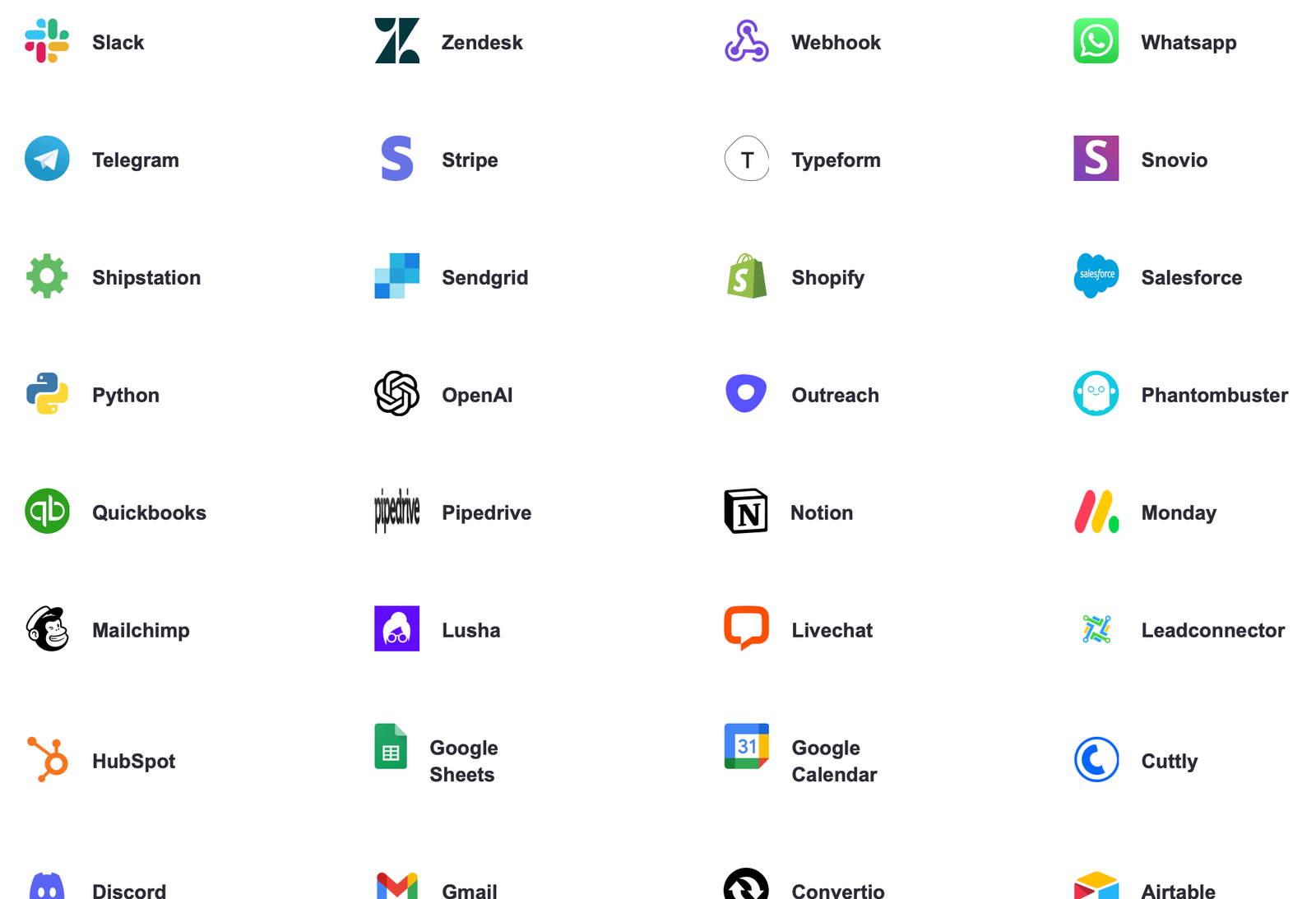
Nanonets can automate each step of the lead enrichment workflow, thus making it touch-less for you and your teams-
- Automatic Lead Data Capture: Integration with data extraction tools like Nanonets OCR and ABBYY.
- Auto-Enrichment with External Data: Integration with Lead Enrichment APIs from companies like Apollo, ZoomInfo, or LinkedIn Sales Navigator for automatic data enrichment upon new lead creation.
- Automated Data Entry in CRM: Integration to enrich data automatically with CRM systems, eliminating manual entry. This integration involves CRM platforms like Salesforce, HubSpot, Zoho CRM, or Microsoft Dynamics, ensuring that all enriched data is accurately and promptly updated in the CRM database.
- Automated Lead Scoring: Integration with CRM lead scoring tools like Zoho CRM's built-in lead scoring, Salesforce Einstein Lead Scoring, or HubSpot’s predictive lead scoring feature. These tools automatically evaluate leads based on enriched data, assigning scores to prioritize and qualify leads effectively.
- Auto-Segmentation of Leads: Integration to leverage Nanonets workflows in conjunction with CRM functionalities. This process uses the scoring and enriched data from systems like Salesforce, HubSpot, or Marketo to categorize leads into distinct segments in corresponding CRM systems directly.
- Automated Personalized Outreach: Integration with marketing automation tools such as Marketo, Lemlist, HubSpot Marketing Hub, Mailchimp, etc. These platforms use the segmented and enriched lead data from Nanonets to trigger personalized email campaigns, ensuring that each lead receives content tailored to their specific profile and interests.
Nanonets revolutionizes lead management by significantly boosting efficiency and accuracy. By automating the entire process, it allows sales teams to focus on what truly matters - engaging meaningfully with leads. The real-time data processing and integration capabilities of Nanonets ensure that sales representatives have the most current and comprehensive information at their fingertips. This leads to more targeted and effective marketing strategies, efficient lead segmentation, and higher conversion rates. Furthermore, by reducing manual data entry and segmentation, Nanonets minimizes the risk of human error and saves valuable time. Sales teams can now concentrate on developing relationships and closing deals rather than being bogged down by administrative tasks.
In conclusion, Nanonets doesn’t just streamline lead enrichment; it empowers sales teams to operate at their peak efficiency. By harnessing the power of automation and real-time data, Nanonets ensures that sales strategies are data-driven, personalized, and highly effective, ultimately leading to increased sales and customer satisfaction. In the rapidly evolving world of sales and marketing, Nanonets stands out as a game-changer, driving businesses towards greater success.
Automate manual tasks and workflows with our AI-driven workflow builder, designed by Nanonets for you and your teams.
Try Nanonets Workflow Automation
Nanonets Workflows can be extended to tasks beyond lead enrichment.
Harnessing the Power of Workflow Automation: A Game-Changer for Modern Businesses
In today's fast-paced business environment, workflow automation stands out as a crucial innovation, offering a competitive edge to companies of all sizes. The integration of automated workflows into daily business operations is not just a trend; it's a strategic necessity. In addition to this, the advent of LLMs has opened even more opportunities for automation of manual tasks and processes.
Welcome to Nanonets Workflow Automation, where AI-driven technology empowers you and your team to automate manual tasks and construct efficient workflows in minutes. Utilize natural language to effortlessly create and manage workflows that seamlessly integrate with all your documents, apps, and databases.
Our platform offers not only seamless app integrations for unified workflows but also the ability to build and utilize custom Large Language Models Apps for sophisticated text writing and response posting within your apps. All the while ensuring data security remains our top priority, with strict adherence to GDPR, SOC 2, and HIPAA compliance standards.
To better understand the practical applications of Nanonets workflow automation, let's delve into some real-world examples.
Automated Customer Support and Engagement Process
Ticket Creation – Zendesk: The workflow is triggered when a customer submits a new support ticket in Zendesk, indicating they need assistance with a product or service.Ticket Update – Zendesk: After the ticket is created, an automated update is immediately logged in Zendesk to indicate that the ticket has been received and is being processed, providing the customer with a ticket number for reference.Information Retrieval – Nanonets Browsing: Concurrently, the Nanonets Browsing feature searches through all the knowledge base pages to find relevant information and possible solutions related to the customer's issue.Customer History Access – HubSpot: Simultaneously, HubSpot is queried to retrieve the customer's previous interaction records, purchase history, and any past tickets to provide context to the support team.Ticket Processing – Nanonets AI: With the relevant information and customer history at hand, Nanonets AI processes the ticket, categorizing the issue and suggesting potential solutions based on similar past cases.Notification – Slack: Finally, the responsible support team or individual is notified through Slack with a message containing the ticket details, customer history, and suggested solutions, prompting a swift and informed response.Automated Issue Resolution Process

Initial Trigger – Slack Message: The workflow begins when a customer service representative receives a new message in a dedicated channel on Slack, signaling a customer issue that needs to be addressed.Classification – Nanonets AI: Once the message is detected, Nanonets AI steps in to classify the message based on its content and past classification data (from Airtable records). Using LLMs, it classifies it as a bug along with determining urgency.Record Creation – Airtable: After classification, the workflow automatically creates a new record in Airtable, a cloud collaboration service. This record includes all relevant details from the customer's message, such as customer ID, issue category, and urgency level.Team Assignment – Airtable: With the record created, the Airtable system then assigns a team to handle the issue. Based on the classification done by Nanonets AI, the system selects the most appropriate team – tech support, billing, customer success, etc. – to take over the issue.Notification – Slack: Finally, the assigned team is notified through Slack. An automated message is sent to the team's channel, alerting them of the new issue, providing a direct link to the Airtable record, and prompting a timely response.Automated Meeting Scheduling Process

Initial Contact – LinkedIn: The workflow is initiated when a professional connection sends a new message on LinkedIn expressing interest in scheduling a meeting. An LLM parses incoming messages and triggers the workflow if it deems the message as a request for a meeting from a potential job candidate.Document Retrieval – Google Drive: Following the initial contact, the workflow automation system retrieves a pre-prepared document from Google Drive that contains information about the meeting agenda, company overview, or any relevant briefing materials.Scheduling – Google Calendar: Next, the system interacts with Google Calendar to get available times for the meeting. It checks the calendar for open slots that align with business hours (based on the location parsed from LinkedIn profile) and previously set preferences for meetings.Confirmation Message as Reply – LinkedIn: Once a suitable time slot is found, the workflow automation system sends a message back through LinkedIn. This message includes the proposed time for the meeting, access to the document retrieved from Google Drive, and a request for confirmation or alternative suggestions.Invoice Processing in Accounts Payable
Receipt of Invoice - Gmail: An invoice is received via email or uploaded to the system.Data Extraction - Nanonets OCR: The system automatically extracts relevant data (like vendor details, amounts, due dates).Data Verification - Quickbooks: The Nanonets workflow verifies the extracted data against purchase orders and receipts.Approval Routing - Slack: The invoice is routed to the appropriate manager for approval based on predefined thresholds and rules.Payment Processing - Brex: Once approved, the system schedules the payment according to the vendor's terms and updates the finance records.Archiving - Quickbooks: The completed transaction is archived for future reference and audit trails.Internal Knowledge Base Assistance

Initial Inquiry – Slack: A team member, Smith, inquires in the #chat-with-data Slack channel about customers experiencing issues with QuickBooks integration.Automated Data Aggregation - Nanonets Knowledge Base:Ticket Lookup - Zendesk: The Zendesk app in Slack automatically provides a summary of today's tickets, indicating that there are issues with exporting invoice data to QuickBooks for some customers.Slack Search - Slack: Simultaneously, the Slack app notifies the channel that team members Patrick and Rachel are actively discussing the resolution of the QuickBooks export bug in another channel, with a fix scheduled to go live at 4 PM.Ticket Tracking – JIRA: The JIRA app updates the channel about a ticket created by Emily titled "QuickBooks export failing for QB Desktop integrations," which helps track the status and resolution progress of the issue.Reference Documentation – Google Drive: The Drive app mentions the existence of a runbook for fixing bugs related to QuickBooks integrations, which can be referenced to understand the steps for troubleshooting and resolution.Ongoing Communication and Resolution Confirmation – Slack: As the conversation progresses, the Slack channel serves as a real-time forum for discussing updates, sharing findings from the runbook, and confirming the deployment of the bug fix. Team members use the channel to collaborate, share insights, and ask follow-up questions to ensure a comprehensive understanding of the issue and its resolution.Resolution Documentation and Knowledge Sharing: After the fix is implemented, team members update the internal documentation in Google Drive with new findings and any additional steps taken to resolve the issue. A summary of the incident, resolution, and any lessons learned are already shared in the Slack channel. Thus, the team’s internal knowledge base is automatically enhanced for future use.
The Future of Business Efficiency
Nanonets Workflows is a secure, multi-purpose workflow automation platform that automates your manual tasks and workflows. It offers an easy-to-use user interface, making it accessible for both individuals and organizations.
To get started, you can schedule a call with one of our AI experts, who can provide a personalized demo and trial of Nanonets Workflows tailored to your specific use case.
Once set up, you can use natural language to design and execute complex applications and workflows powered by LLMs, integrating seamlessly with your apps and data.

Supercharge your teams with Nanonets Workflows allowing them to focus on what truly matters.
Automate manual tasks and workflows with our AI-driven workflow builder, designed by Nanonets for you and your teams.
- SEO Powered Content & PR Distribution. Get Amplified Today.
- PlatoData.Network Vertical Generative Ai. Empower Yourself. Access Here.
- PlatoAiStream. Web3 Intelligence. Knowledge Amplified. Access Here.
- PlatoESG. Carbon, CleanTech, Energy, Environment, Solar, Waste Management. Access Here.
- PlatoHealth. Biotech and Clinical Trials Intelligence. Access Here.
- Source: https://nanonets.com/blog/lead-enrichment/
- :has
- :is
- :not
- :where
- $UP
- 000
- 1
- 100
- 150
- 200
- 2022
- 250
- 36
- 51
- 53
- a
- ability
- About
- access
- accessible
- According
- Accounts
- accuracy
- accurate
- accurately
- actively
- adding
- addition
- Additional
- address
- addressed
- adherence
- administrative
- advancements
- advent
- After
- against
- agenda
- aggregation
- AI
- aids
- Aiming
- aims
- align
- All
- Allowing
- allows
- along
- already
- also
- alternative
- amounts
- an
- analysis
- and
- Another
- any
- api
- APIs
- apollo
- app
- applications
- approach
- appropriate
- approval
- approved
- apps
- ARE
- AS
- ask
- assigned
- Assistance
- At
- attributes
- audit
- automate
- Automated
- automates
- Automatic
- automatically
- automating
- Automation
- available
- avoid
- B2B
- back
- base
- based
- basic
- BE
- become
- been
- being
- benefits
- Better
- Beyond
- billing
- bogged
- boosting
- both
- Briefing
- Browsing
- budget
- Bug
- bugs
- build
- builder
- built-in
- business
- business operations
- businesses
- but
- by
- Calendar
- call
- Calls
- Campaign
- Campaigns
- CAN
- candidate
- candidates
- capabilities
- capability
- capture
- captured
- card
- Cards
- case
- cases
- categorizing
- Category
- challenges
- Changes
- Channel
- characteristics
- Checks
- classification
- Classify
- clearer
- closing
- Cloud
- collaborate
- collaboration
- Collecting
- collects
- Communication
- Companies
- company
- compatible
- competitive
- complete
- Completed
- complex
- compliance
- comprehensive
- concentrate
- conclusion
- confirmation
- conjunction
- connection
- construct
- contact
- contacts
- contains
- content
- context
- Conversation
- conversely
- Conversion
- convert
- converting
- Corresponding
- costly
- Costs
- countries
- craft
- crafted
- create
- created
- creates
- Creating
- creation
- criteria
- CRM
- crucial
- Current
- custom
- customer
- Customer satisfaction
- Customer Service
- Customer Success
- Customer Support
- Customers
- customize
- daily
- data
- data analysis
- data enrichment
- data entry
- data integration
- data points
- data processing
- data security
- data-driven
- Database
- databases
- Dates
- Deals
- Decision Making
- dedicated
- deliver
- delve
- Demo
- deployment
- Design
- designed
- desktop
- detailed
- details
- detected
- Determine
- determining
- developing
- different
- digital
- direct
- directly
- discussing
- distinct
- do
- document
- documentation
- documents
- Doesn’t
- domains
- done
- down
- downloads
- drive
- driving
- due
- dynamic
- dynamics
- each
- easier
- easy
- easy-to-use
- Edge
- Effective
- effectively
- efficiency
- efficient
- effort
- effortlessly
- efforts
- einstein
- either
- eliminate
- eliminating
- email parsing
- emails
- embedded
- empowers
- enables
- enabling
- encryption
- engage
- engagement
- engaging
- enhance
- enhanced
- enhancing
- enrich
- enriched
- enriching
- ensure
- ensures
- ensuring
- entered
- Enters
- Entire
- entry
- Environment
- error
- essential
- etc
- Ether (ETH)
- evaluate
- Even
- events
- evolved
- evolving
- exactly
- example
- examples
- Except
- execute
- existing
- experiencing
- experts
- export
- external
- extraction
- Extracts
- failing
- fast-paced
- Feature
- Features
- feeding
- filling
- filters
- Finally
- finance
- Find
- findings
- fingertips
- fit
- Fix
- Focus
- focused
- focuses
- following
- For
- Forum
- found
- fresh
- friction
- from
- fully
- functionalities
- Furthermore
- future
- Future of business
- game-changer
- gather
- gathering
- GDPR
- generated
- generation
- get
- gif
- gmail
- Go
- greater
- Group’s
- hand
- handle
- Handles
- Harnessing
- Have
- headcount
- help
- helps
- here
- High-End
- higher
- highly
- history
- HOURS
- How
- How To
- HTTPS
- Hub
- HubSpot
- human
- ID
- ideal
- identifies
- identify
- if
- imagine
- immediately
- impactful
- implemented
- important
- improved
- improvements
- improving
- in
- incident
- include
- includes
- Including
- Incoming
- increased
- increasing
- indicate
- indicating
- individual
- individuals
- industries
- industry
- industry-specific
- info
- information
- informed
- initial
- initiated
- Innovation
- input
- inquiry
- insights
- instance
- instantly
- integrate
- integrated
- Integrates
- Integrating
- integration
- integrations
- Intelligence
- interaction
- interactions
- interacts
- interest
- interests
- Interface
- internal
- into
- invoice
- involves
- isn
- issue
- issues
- IT
- ITS
- Job
- job titles
- just
- keeping
- Key
- Know
- Knowing
- knowledge
- known
- language
- large
- lead
- leading
- Leads
- learned
- Lessons
- Lessons Learned
- let
- Level
- Leverage
- leveraging
- like
- likelihood
- likely
- LINK
- LinkedIn profile
- List
- live
- location
- logged
- lookup
- losses
- lost
- mailchimp
- Making
- manage
- management
- manager
- manual
- manually
- March
- Market
- marketers
- Marketing
- marketing automation
- Marketing Campaigns
- Marketing Strategies
- Marketo
- materials
- Matters
- meaningful
- meeting
- meetings
- member
- Members
- mentions
- message
- messages
- Microsoft
- minimizes
- minutes
- models
- Modern
- monthly
- more
- more efficient
- most
- multiple
- Named
- names
- Natural
- Natural Language
- Navigator
- necessity
- Need
- needs
- network
- New
- next
- now
- number
- obtained
- obtains
- OCR
- of
- offer
- offered
- offering
- Offerings
- Offers
- on
- On-Demand
- once
- ONE
- only
- open
- opened
- operate
- Operations
- opportunities
- or
- order
- orders
- organizations
- Other
- our
- out
- Outlook
- output
- outreach
- over
- overview
- pages
- part
- past
- patrick
- payment
- Peak
- per
- personalization
- Personalized
- picture
- Pipedrive
- Pitch
- platform
- Platforms
- plato
- Plato Data Intelligence
- PlatoData
- plays
- pm
- Point
- points
- Popular
- possible
- potential
- potential customers
- power
- powered
- Practical
- Practical Applications
- precise
- predictive
- preferences
- previous
- previously
- Prioritize
- priority
- process
- processed
- processes
- processing
- Product
- professional
- Profile
- Progress
- proposed
- proven
- provide
- provider
- provides
- providing
- purchase
- put
- Q&A
- qualification
- qualify
- quality
- Questions
- Quickbooks
- rapidly
- Rates
- rather
- RE
- real world
- real-time
- real-time data
- reasons
- receipts
- received
- receives
- record
- recording
- records
- reducing
- reference
- related
- Relationships
- relevant
- remains
- reply
- Reported
- representative
- Representatives
- request
- research
- researches
- Resolution
- resolve
- Resonate
- respective
- response
- responsible
- REST
- result
- revenue
- revolutionizes
- Risk
- robust
- ROI
- Role
- routing
- rules
- Run
- s
- sales
- Sales and Marketing
- Sales Strategies
- salesforce
- Salespeople
- satisfaction
- schedule
- scheduled
- scheduling
- scored
- scores
- scoring
- seamless
- seamlessly
- searches
- sector
- secure
- Secures
- security
- see
- seen
- segment
- segmentation
- segments
- Selling
- sending
- sends
- sent
- serves
- service
- Services
- set
- setup
- Share
- shared
- sharing
- show
- Shows
- significant
- significantly
- similar
- Simple
- simultaneously
- single
- Size
- sizes
- slack
- slot
- slots
- smith
- So
- Software
- software solution
- solution
- Solutions
- some
- somewhat
- sophisticated
- Sources
- Speaks
- specific
- SSL
- stands
- started
- Status
- Step
- Steps
- Still
- Strategic
- strategies
- streamline
- strict
- success
- successful
- such
- suitable
- SUMMARY
- support
- Supporting
- Supports
- SWIFT
- system
- Systems
- T
- tailored
- Take
- taken
- targeted
- tasks
- team
- Team members
- teams
- tech
- Technology
- templates
- terms
- territory
- text
- than
- that
- The
- their
- Them
- then
- There.
- These
- they
- think
- this
- Through
- Thus
- ticket
- tickets
- time
- time-consuming
- timely
- times
- Title
- titled
- titles
- to
- today
- tool
- tools
- top
- towards
- track
- Tracking
- trade
- transaction
- transfer
- transforms
- Trend
- trial
- trigger
- triggered
- truly
- Trust
- two
- typically
- Ultimately
- understand
- understanding
- unified
- unlimited
- up-to-date
- Update
- updated
- Updates
- uploaded
- upon
- urgency
- use
- use case
- used
- User
- User Interface
- uses
- using
- utilize
- utilized
- Valuable
- variety
- Vast
- vendor
- Verification
- via
- View
- VIMEO
- Visit
- vital
- was
- we
- Website
- websites
- Weeks
- WELL
- What
- What is
- when
- whenever
- which
- while
- WHO
- why
- with
- within
- Won
- workflow
- workflow automation
- workflows
- world
- world’s
- writing
- year
- you
- Your
- youtube
- Zendesk
- zephyrnet
- Zoho

